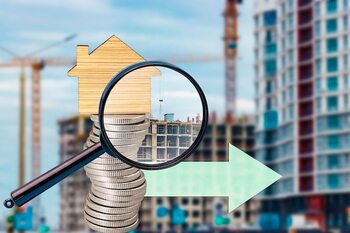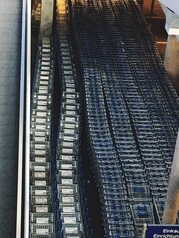The influence of citizen participation on real estate value

Citizen participation is a fundamental driver that boosts real estate value in our communities. In a world where location and appreciation are key to investment, understanding how collective decisions can influence the market becomes essential. This article explores the positive impact of active citizenship on property valuation, highlighting effective strategies that promote an environment of collaboration and sustainable development. Discover how your voice can transform not only your neighborhood but also your investment!
The relationship between citizen participation and urban development
Citizen participation plays a crucial role in urban development, as it fosters a sense of belonging and shared responsibility among residents. When citizens actively engage in the planning and execution of urban projects, they not only contribute to more informed decision-making but also ensure that their needs and desires are taken into account. This translates into more functional and attractive public spaces, as well as initiatives that promote sustainability and community well-being. In this context, collaboration between neighbors and local authorities can lead to significant improvements in the area's infrastructure and services, which is essential for increasing property value.
Additionally, citizen participation promotes greater transparency and accountability from local governments. When citizens are organized and committed to their community, they can advocate for policies that favor equitable and sustainable development. This not only improves the quality of life but also generates trust in the local real estate market. Investors and buyers are more likely to positively value those areas where there is a strong social fabric and active community participation. In this way, by strengthening the relationship between citizenship and urban development, a virtuous circle is created where each collective action contributes to the increase in property value in the neighborhood.
2. How community initiatives increase added value
Community initiatives play a crucial role in increasing property value. When residents organize to address local issues such as safety, maintenance of public spaces, or promoting cultural events, they create a sense of belonging and social cohesion that attracts future buyers. A neighborhood where citizens are involved and committed is often perceived as more desirable, which in turn raises property prices in that area. Furthermore, these initiatives can include urban beautification projects and infrastructure improvements that not only enrich the environment but also enhance the overall appeal of the place.
Collaboration among neighbors also fosters a culture of shared responsibility for common space, which is essential for maintaining and increasing property value. Projects like community gardens, local fairs, and recreational activities contribute to the sustainable development of the area by encouraging active participation and creating a friendly environment. These types of actions not only improve the quality of life for current residents but also attract potential investors. At the end of the day, a vibrant and well-managed community translates into a tangible increase in real estate value, demonstrating how collective decisions can have lasting effects on our local economic environment.
3. The role of neighborhood groups in urban planning
Neighborhood groups play a crucial role in urban planning, acting as the bridge between citizens and local authorities. Through community meetings, surveys, and discussion forums, these groups allow residents' voices to be heard in the decision-making process. By involving neighbors in defining development projects, land use, and public spaces, it ensures that initiatives truly reflect the needs and desires of the community. This not only strengthens the sense of belonging and social cohesion but also creates a more attractive environment for future investors.
Furthermore, active participation in neighborhood groups can result in greater transparency and accountability from local governments. When citizens organize to advocate for specific improvements—such as parks, efficient public transportation, or sustainable infrastructure—they are setting a standard that can elevate both the quality of life and the property values of the area. Well-planned developments that are accepted by the community tend to succeed in the long term, which is essential for maintaining and increasing the property appreciation. Therefore, strengthening these groups not only benefits their immediate members but also has positive implications for the entire community in economic and social terms.
4. Success stories: communities that increased their real estate value
One of the most emblematic examples of how citizen participation can increase real estate value is the case of a community that came together to revitalize a local park. The residents, noticing that the green space was in poor condition and underutilized, organized cleanup and planting days, as well as community events to encourage its use. This initiative not only improved the aesthetic of the area but also attracted new buyers interested in living near a renewed natural environment. As a result, adjacent properties experienced a significant increase in value, demonstrating that collaboration among neighbors can significantly transform the appeal of a neighborhood.
Another successful case is observed in a neighborhood where citizens took the initiative to establish a community safety program. Through regular meetings and a digital platform to report incidents, they managed to reduce crime rates in their area. The perception of safety not only improved the quality of life for current residents but also made the area more attractive for potential buyers and investors. Thus, the joint effort not only elevated the sense of community but also had a direct impact on the valuation of the local real estate market. This type of project shows how collective actions can positively influence the economic and social development of a region.
5. Strategies to promote effective citizen participation
To promote effective citizen participation, it is essential to establish accessible and transparent communication channels. This involves creating platforms where citizens can express their concerns, ideas, and proposals regarding their environment. The use of digital tools, such as mobile applications or social media, can facilitate this process by allowing continuous dialogue between neighbors and local authorities. Additionally, organizing community forums and regular assemblies not only empowers citizens but also strengthens the sense of belonging and shared responsibility towards the development of the neighborhood.
Another key strategy is to encourage civic education within the community. By providing workshops and informational resources about the importance of citizen participation in real estate valuation, greater awareness among residents is fostered regarding how their actions directly impact the value of their properties. Additionally, collaborating with local organizations to offer courses on urban planning and sustainability can equip citizens with the necessary tools to actively engage in decisions that affect their quality of life. Ultimately, an informed citizenry is more likely to actively participate in initiatives that promote harmonious and sustainable growth in the area where they live.
6. The influence of local art and culture on property value
The influence of local art and culture on property value is a key aspect that cannot be ignored. Communities that foster artistic expressions, such as murals, cultural festivals, or art fairs, often attract more visitors and residents interested in living in a vibrant and dynamic environment. This atmosphere enriched by art not only improves the quality of life for inhabitants but also turns the area into a focal point for investors. When a community identifies with its local culture, properties tend to appreciate, as buyers seek spaces that offer an emotional and cultural connection.
Furthermore, citizen participation in artistic and cultural activities directly contributes to strengthening the social fabric. By engaging in community projects related to art, citizens can express their needs and desires regarding the development of their neighborhood. This collaboration fosters a collective identity that resonates among both residents and visitors to the area. As a result, a virtuous cycle is created where real estate value increases due to a shared sense of belonging and community pride. Thus, art and culture not only beautify the urban space but also act as catalysts for increasing property values within that community.
7. Sustainable developments: Why do they matter to investors?
Sustainable developments have gained increasing importance in the real estate investment sector, and this is due to several factors that go beyond mere financial return. For investors, opting for projects that incorporate sustainable practices not only represents an ethical responsibility but also a smart strategy to maximize the long-term value of their assets. Properties built with sustainability criteria tend to be more attractive to environmentally conscious tenants and buyers, which translates into an increase in demand and, therefore, in their valuation. Moreover, these developments are often better prepared to face increasingly strict environmental regulations, which minimizes legal and financial risks.
Citizen participation plays a crucial role in promoting these sustainable developments. When the community is involved in the planning and decision-making process, it is more likely that innovative solutions will be implemented that respond to local needs and respect the natural environment. This not only improves the quality of life for residents but also adds significant value to surrounding properties. For investors, this collaborative approach can result in unique opportunities: revitalized areas where socially responsible investment generates positive returns both economically and for the community. Consequently, understanding the dynamics between citizen participation and sustainable development is essential for any investor looking to align their portfolio with future trends in the real estate market.
8. How public policies impact citizen participation and real estate value
Public policies play a crucial role in how citizens engage in decision-making that affects their environment. When authorities design and implement policies that promote citizen participation, an effective channel is created for neighbors to express their needs and concerns. This not only strengthens social fabric but can also result in significant improvements in infrastructure, services, and public spaces. With an active and committed community, development projects that are more aligned with neighborhood expectations are generated, which in turn increases property value by attracting more buyers interested in those improved areas.
Furthermore, transparency and effective communication between authorities and citizens are essential to ensure active participation. Policies that promote community forums, urban planning workshops, or open surveys allow residents to engage directly in the decision-making process. This type of inclusion not only empowers citizens but also elevates the level of trust towards government institutions. As positive relationships are built between both groups, an environment is fostered where urban development occurs in a more sustainable and equitable manner, positively reflecting on the real estate value of the area by making it more desirable for new residents and investors.
9. Digital tools that enhance community engagement
Digital tools have revolutionized the way communities engage and participate in decision-making that affects their environment. Platforms such as social media, mobile applications, and online forums allow citizens to express their opinions, share concerns, and propose solutions to local problems more quickly and accessibly. This connectivity not only facilitates dialogue among neighbors but also empowers residents by giving them a voice on important issues, such as urban development projects or environmental initiatives. By fostering a sense of belonging and collaboration, these digital tools directly contribute to increasing a community's appeal to future investors.
Additionally, the use of digital tools can facilitate the organization of community events and activities that promote active participation. Applications for meeting planning, online surveys on neighborhood preferences, or platforms for collecting signatures can quickly mobilize a large number of people. This type of involvement not only strengthens community ties but can also generate collective initiatives that improve local infrastructure or promote more attractive public spaces. As communities work together using technology to address common challenges, real estate values tend to increase due to the added appeal of living in a place where citizens are committed to their development and collective well-being.
10. The future of the real estate market: trends in citizen participation
The future of the real estate market is envisioned as an ecosystem in which citizen participation will play an increasingly crucial role. As cities evolve, citizens are taking the initiative to actively engage in urban planning and the development of their communities. This trend not only strengthens social cohesion but also elevates property values by creating more attractive and functional environments. Housing projects, revitalized public spaces, and improved community services are just some of the initiatives that emerge when residents organize and present their needs and desires to local authorities.
Moreover, digitalization has facilitated this participation, allowing citizens to express their opinions through online platforms and social networks. This has led to greater transparency in decision-making and fostered a sense of belonging among residents. In this context, real estate investments are increasingly aligned with community expectations, resulting in a market where open and constructive dialogue redefines the concept of added value. At the end of the day, a collaborative environment not only improves the quality of life in neighborhoods but also ensures that real estate value continues to grow in harmony with the collective aspirations of its citizens.



